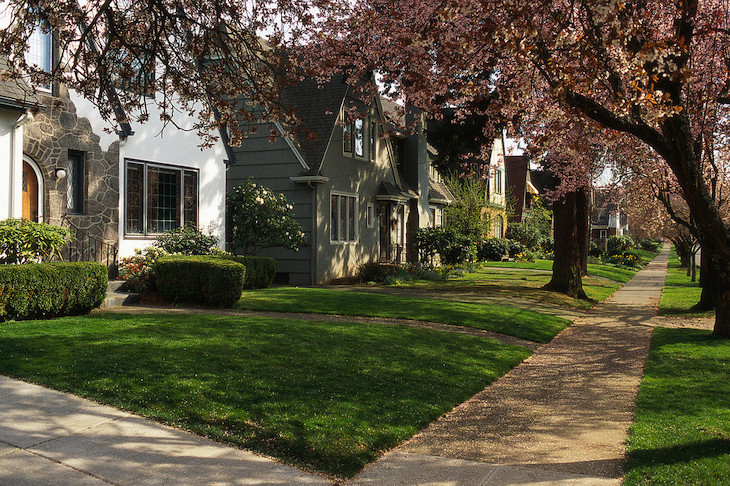By Nelson Beckford, Program Director, Neighborhood Revitalization and Engagement
This blog was originally published on www.MiddleNeighborhoods.org.
Think about curb cuts for a minute. Fifty years ago, wheelchair users found it difficult to navigate city streets because of the sharp sidewalk drop-offs making it impossible to travel city blocks without assistance. Well-organized advocacy and lobbying led to solutions such as curb cuts, ramps alongside staircases, elevators with reachable buttons, and accessible bathrooms. These interventions improved wheelchair accessibility while further expanding benefits to individuals with strollers and delivery people. The benefits pie didn’t shrink.
Picture this: a rectangular table with 30 leaders from Cleveland’s community development field in a meeting hosted by Cleveland Neighborhood Progress with program staff from the Cleveland Foundation and a community development outreach officer at the Cleveland Federal Reserve Bank. These are the people, mostly leaders of community-based organizations (CBO), doing the herculean task of stabilizing and revitalizing neighborhoods. Like other cities, Cleveland neighborhoods can be broadly categorized into three types: strong, middle, and distressed. We were there to join a conversation about the concept of ‘middle neighborhoods’ and to provide a recap of the Middle Neighborhood working group meeting in Cleveland for those who weren’t able to join. I didn’t know what to expect. Will the group take offense to the term ‘middle neighborhood’? Will those working to strengthen more distressed places see the work of middle neighborhood stabilization as a pull on already limited resources? How will the conversation about race shift when talking about middle-class African Americans?
To our surprise, people leaned into the discussions. The CBO directors from the middle neighborhoods outlined the ways these places are changing and the many ways they are not. One CBO director from a ‘distressed neighborhood’ said that they aspire to be a ‘middle neighborhood.’ A director from a ‘strong neighborhood’ talked about the prevalence of certain streets that classify as ‘middle’ in their communities.
The energy in the room was high and it was clear the conversation around ‘middle neighborhoods’ had just begun. The first order of business is finding a way to define this term in the context of Cleveland – at this moment in time. Scale is also a question we need to wrestle with. And maybe ‘middle neighborhood’ is the wrong term? One thing is certain: as with curb cuts, the nascent middle neighborhood movement will be a failure if the benefits and lessons don’t transfer to the other neighborhood types. That is our charge.
Learn more about the Cleveland Foundation’s commitment to neighborhood revitalization and engagement here.
